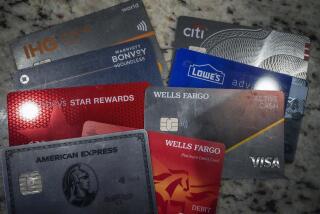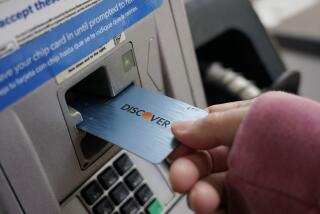Consumer Bankruptcies Climb by 15.1%
Consumer bankruptcy filings soared 15.1% during the 12 months ended in March, raising fresh concerns about the strength of the U.S. economic recovery.
“The consumer sector is extremely leveraged,” said Paul Kasriel, chief economist with Northern Trust Corp. in Chicago. “I think it’s one of the reasons that the [Federal Reserve] is reluctant to raise interest rates. It might not take all that much in the way of rate increases to push the consumer over the edge and tip the economy back into a recession again.”
Personal bankruptcy filings totaled 1.5 million for the year ended March 31, the Administrative Office of the U.S. Courts reported. Filings by businesses rose 10.7% to 39,845 during the same period.
Normally, consumers shed debt and cut personal spending when the economy begins to falter. However, low home mortgage rates and no-interest deals on auto loans spurred individuals to maintain strong spending levels throughout last year’s downturn, said Samuel J. Gerdano, executive director of the American Bankruptcy Institute in Alexandria, Va.
Consumer spending accounts for about two-thirds of economic growth, so this strong spending--which continued in April, according to the latest government figures--has helped pull the U.S. out of its economic slump. But it also has put millions of consumers in jeopardy--easily toppled by financial upsets ranging from job losses to divorce.
“As usual, consumers have done more than their share to pull the economy out of what turned out to be a very small ditch,” Gerdano said. “But bankruptcy is kitchen-table-to-kitchen-table economics.
“If you have lost your job, lost your medical insurance and you are getting calls from creditors every night, you are going to file bankruptcy.”
Personal bankruptcies rose 3.5% to 369,237 during the first three months of the year, compared with the same period a year ago. Total filings--personal and business--during the quarter were 379,012, up 3.9% from the first quarter of 2001 and the second-highest ever after last year’s second-quarter total of 400,394.
Personal bankruptcies almost always increase for six to nine months after a recession. That’s largely because consumers who become unemployed tend to use up their savings and other liquid assets, hoping to get new work before their finances become hopeless, said John Silvia, chief economist at Wachovia Bank in Charlotte, N.C. And when they can’t find work after exhausting their savings, consumers file for protection from creditors through bankruptcy.
Unfortunately, there’s little relief on the job front. The Labor Department announced Thursday that initial claims for unemployment benefits rose by 418,000 last week.
There are 3.9 million Americans claiming jobless benefits--the highest level in nearly 20 years.
However, bankruptcies also may be rising in anticipation of legislation that could make it more difficult to file, Gerdano said.
Congress is debating a bankruptcy overhaul bill that would make it more difficult for consumers and businesses to erase their unsecured debts if they have any means to pay.
“It’s possible that debtors’ counsel are saying that if you are on the borderline, now is a better time to file than later,” Gerdano said. “Ironically, if that bill is passed, you’ll see a real spike in filings from people who want to file under the old rules.”
More to Read
Inside the business of entertainment
The Wide Shot brings you news, analysis and insights on everything from streaming wars to production — and what it all means for the future.
You may occasionally receive promotional content from the Los Angeles Times.










